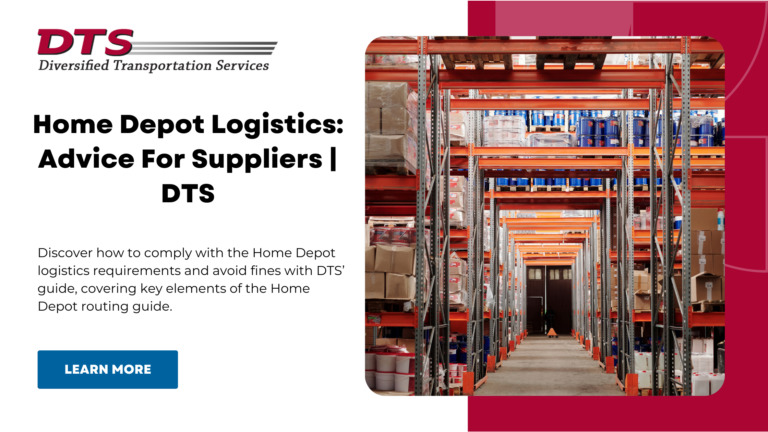
Becoming a Home Depot supplier is a massive achievement for your business, but there’s a lot to learn about dealing with such a massive company, including its supplier freight rules and expectations.
To help suppliers start off on the right foot with Home Depot logistics, the company created a thorough routing guide. What’s in the routing guide? We’ll explore some of the most important details included in the Home Depot routing guide below, from choosing carriers to labeling packages.
Home Depot distributes a comprehensive routing guide to all suppliers shipping within the U.S., Canada, and Puerto Rico. It outlines carrier assignments and shipping rules for all suppliers (regardless of their freight terms).
Before you start sending shipments, you need to review the guide to ensure you fully comply with Home Depot’s requirements. You’ll find the routing guide in your Home Depot Supplier Hub (sign-in required).
Here are five major points from the routing guide:
When preparing to ship goods to Home Depot, your products and practices must adhere to its Responsible Product Standards and Responsible Sourcing Supplier Manual. Both resources are comprehensive, explaining Home Depot’s expectations in detail.
All suppliers must only use carriers assigned by Home Depot, as specified in the routing guide. The routing guide is updated regularly, so it’s best to check it frequently for the most updated information about approved carriers.
There are two main channels for suppliers shipping goods to Home Depot stores: Rapid distribution centers (RDCs) and direct fulfillment centers (DFCs). You’ll typically send your freight to one of the many RDCs or DFCs across the U.S.
Additionally, Internal Freight Consolidation facilities (IFCs) are another key part of Home Depot logistics. IFCs consolidate smaller shipments into larger ones to keep transportation costs down and streamline shipping.
The Home Depot routing guide covers the bill of lading, a document that contains essential details about a shipment (e.g. quantity of goods, destination).
When shipping multiple Purchase Orders (POs) to the same RDC on the same day, suppliers must consolidate shipments under one BOL. A master bill of lading is also required, which will cover the entire shipment. Failure to comply with BOL requirements can result in penalties.
Timelines are a critical part of the routing guide:
For efficient handling and inventory management, you should follow the packaging and labeling standards in the Home Depot logistics guidelines. Here are two key requirements:
Proper labeling helps prevent delays and ensures that shipments will be processed accurately at distribution centers.
Violating the rules outlined in the Home Depot routing guide can lead to penalties (see below). Common violations include:
Home Depot can impose financial penalties if you fail to adhere to the routing guide. These include a $250 offset for routing guide violations and a $75 offset for multiple BOL violations.
New Home Depot suppliers must adhere to the company’s intricate shipping requirements to avoid financial penalties and potential contract loss.
Working with a shipping and logistics company is the simplest, most efficient way to get your Home Depot deliveries right. DTS can manage all the little details for you, leaving you free to focus on running your business.
To learn more about how we can help, get in touch with DTS today.
Whether you're a company looking to improve one facet of your supply chain, your entire supply chain, or simply looking for a transportation and logistics consultation, we can help.